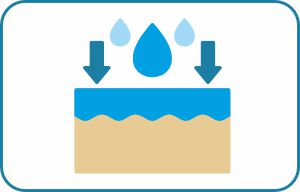wATER TREATMENT
The European Parliament has recognised access to drinking water as a fundamental human right. In Poland, there are 1,800 cubic metres of fresh water per inhabitant per year; the EU average is 5,000 cubic metres.
Just about everyone who has been deprived of water for even a few hours has experienced how important water is for human beings, but not everyone is aware of the processes that water undergoes before it reaches the household tap.
The construction of a Water Treatment Plant and its subsequent operation require a multi-million dollar investment. A key element responsible for the quality of drinking water is the type of filter media used, the cost of which is a fraction of a percent of the total investment.
The use of a high-efficiency filter media, in addition to excellent water quality, will enable a reduction in the filter area and, consequently, a reduction in the number of filters and the investment outlay for the water treatment station.
A high-efficiency filter media will also make it possible to reduce the operating costs of the water treatment station by reducing the amount of water required to flush the filters. A higher water demand does not always have to entail an extension of the water treatment station, sometimes it is sufficient to replace the quartz sand with a high-efficiency filter bed and install higher-capacity pumps.
The high efficiency of a filter media is derived from the properties of the material. from which it is formed. Factors influencing the effectiveness of the media are: chemical composition, porosity, grain shape. The best example of a highly effective filter media is SkySil by Crusil sp. z o.o. SkySil media is formed from chalcedonite, i.e. silica of organic origin with a highly developed pore system. The chalcedonite processing technology developed at Crusil guarantees the highest quality filter media.


